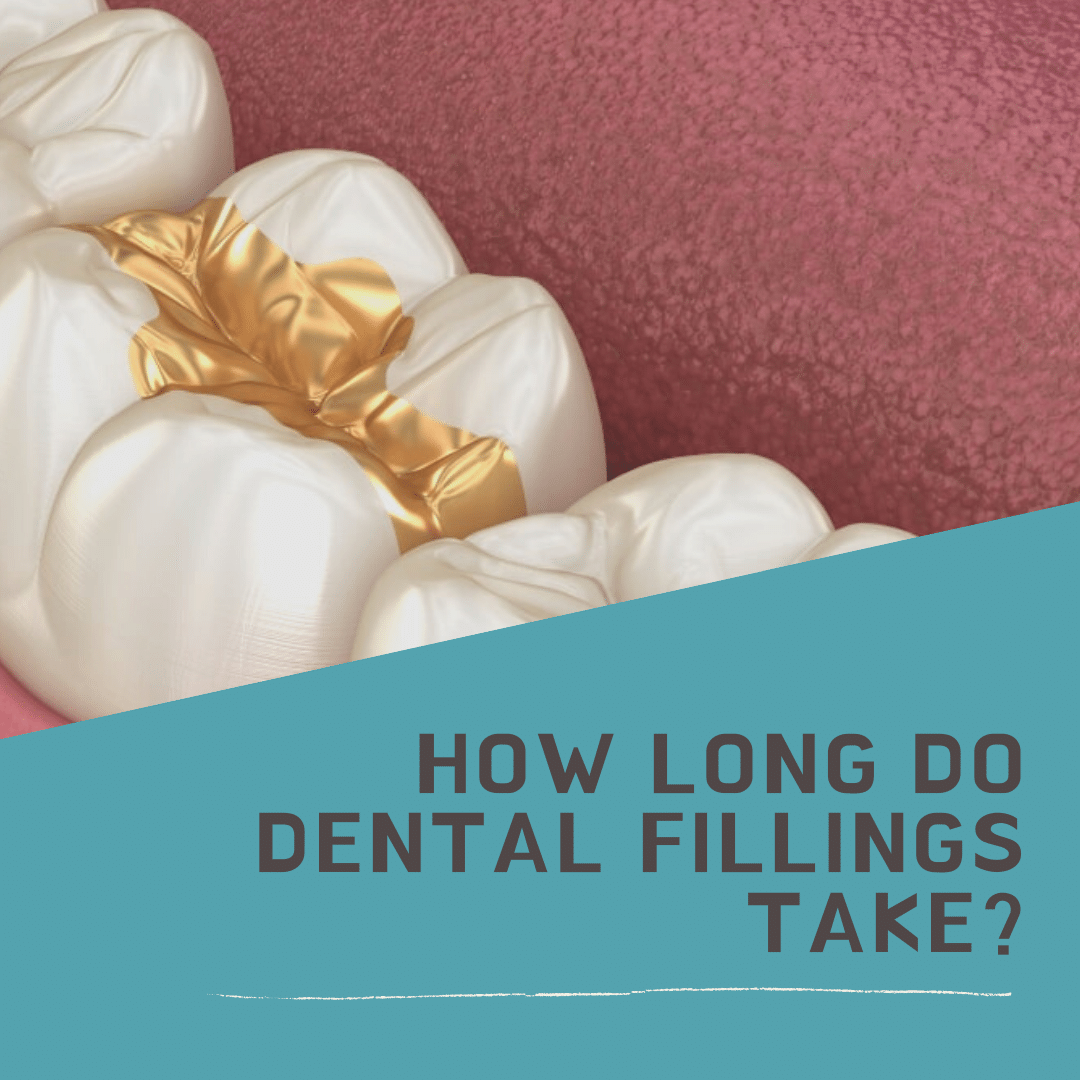You are looking for information, articles, knowledge about the topic nail salons open on sunday near me how long does a filling take on Google, you do not find the information you need! Here are the best content compiled and compiled by the Chewathai27.com team, along with other related topics such as: how long does a filling take how long does it take to fill a small cavity, how long does it take to fill a cavity between teeth, how long does a filling take reddit, how long does 3 fillings take, how long does it take for a cavity to destroy a tooth, how long does a filling last, does a filling hurt, how long does it take to fill a cavity on a child
In general, a filling takes an hour or less. A simple filling may take as few as 20 minutes. Many dental offices now have the technology to make onlays and inlays in one appointment, though a larger filling or multiple fillings can take longer.Dental fillings can hurt in some instances. But most cause little to no discomfort during the procedure. If you’re avoiding your dental checkup over concerns about pain, take a deep breath, and read on.If you have micro-cavities in your teeth, expect the procedure to be complete in approximately an hour for three teeth. The dental filling procedure is an excellent technique for repairing mild to moderate damage.
Contents
Is filling painful?
Dental fillings can hurt in some instances. But most cause little to no discomfort during the procedure. If you’re avoiding your dental checkup over concerns about pain, take a deep breath, and read on.
How long does it take to get 3 cavities filled?
If you have micro-cavities in your teeth, expect the procedure to be complete in approximately an hour for three teeth. The dental filling procedure is an excellent technique for repairing mild to moderate damage.
How long do 4 fillings take?
What exactly is a dental filling? Dental fillings take time to complete and require a methodical approach. To be safe, you should for your filling to take approximately one hour to perform from start to finish. If your cavity is small, your dentist will be able to complete your filling in substantially less time.
How long after a filling can you eat?
A composite filling hardens immediately once a dentist puts a blue UV light on your tooth. You can usually eat as soon as you leave your dentist’s office. However, your dentist may recommend waiting for at least 2 hours before chewing on the filling if you’re still numb.
Do fillings hurt without an injection?
No Needles, No Drill, and No Pain
The reason your dentist normally numbs your mouth as part of the filling process is that they must use a drill to remove decayed tissue from inside the tooth. Without anesthesia, you may feel some twinges of pain while that is happening.
Do fillings weaken teeth?
During the filling process, some tooth cavities may require that the overall tooth be modified in shape by wedging or shaping. This can lead to a weakening in the overall structure of the tooth.
How many cavities is normal for a 17 year old?
Adolescents 12 to 19 have an average of 0.54 decayed or missing permanent teeth and 1.03 decayed permanent surfaces.
Do fillings hurt after?
Normal Pain
Soreness of your mouth is very common after having a cavity filled, especially around the area of the affected tooth. It is also common to experience jaw pain. This happens because you’ve had to hold your jaw open for an extended period of time while the dentist works their magic.
Can you get 5 fillings at once?
How many fillings can be done at once? There is not a limit to the amount of fillings that can be done in one appointment, however your doctor may advise you to split up your filling into more than one appointment. If your fillings are in the same place, your dentist may do it in one visit.
How many cavities can they fill at once?
How many cavities can a dentist fill at once? Most dentists will not perform more than 4 fillings in one sitting. Technically there is no limit to home many fillings can be given at a time however it is not recommended to have more than 4.
How long do 2 fillings take?
In general, a filling takes an hour or less. A simple filling may take as few as 20 minutes. Many dental offices now have the technology to make onlays and inlays in one appointment, though a larger filling or multiple fillings can take longer.
Can I brush my teeth after a filling?
Did you know that you don’t have to wait to brush your teeth or floss after a dental filling? As long as you brush gently and floss carefully around the tooth, you should be able to keep the area clean as usual.
What not to do after getting fillings?
It is best to avoid any hard, chewy, or sticky foods after a dental filling for up to two weeks. If you are experiencing tooth sensitivity you may also benefit from avoiding hot or cold drinks and foods. There is no need to wait to brush your teeth after a dental filling.
How long does numbing last from a filling?
For something like a cavity filling, your local anesthesia should wear off within 1 to 3 hours. While the numbness dissipates, you may experience some difficulty chewing, speaking, or even smiling within that window.
Why does my tooth hurt worse after a filling?
An irritated nerve is not uncommon when a deep filling is placed. Irritated nerves can result in inflammation and can cause pain. Your enamel and cementum usually protect the nerve from exposure, but deep fillings can reach the nerve endings and cause uncomfortable, sharp sensations.
How long do teeth hurt after filling?
How long will the sensitivity last? Sensitivity from a tooth filling should go away within two to four weeks. If the sensitivity doesn’t seem to be getting any better during that time, or it lasts for longer than four weeks, contact your dentist.
How long does filling pain last?
Your tooth is sensitive after the filling – this is completely normal straight after the treatment has finished. It’s important to avoid hot and cold foods for at least a few hours while your filling sets. Pain should subside within a week or so and sensitivity should stop after two to four weeks.
What does getting a filling feel like?
During a filling you are unlikely to feel a thing. A filling does not happen in areas of the tooth where there are nerves, so you shouldn’t feel any more pain from the procedure than you would feel from cutting your hair. No nerves = no pain.
How do you make a filling less painful?
Local Anesthetic
This injection feels like a minor pinprick. Some dentists use nitrous oxide gas, also referred to as “laughing gas” to make you more comfortable. This gas also relieves any pain associated with the procedure. Feel free to ask any Crozet dentist staff member about what will be used at your appointment.
How Long Do Fillings Take for Tooth Cavities?
- Article author: www.healthline.com
- Reviews from users: 30671
Ratings
- Top rated: 3.5
- Lowest rated: 1
- Summary of article content: Articles about How Long Do Fillings Take for Tooth Cavities? Updating …
- Most searched keywords: Whether you are looking for How Long Do Fillings Take for Tooth Cavities? Updating Filling a tooth cavity is a common procedure. It often takes about an hour but can vary. Learn how long it takes to set and heal, plus the different materials used.how long do fillings take
- Table of Contents:
How long does it take to get a filling
What are the different types of fillings
What fillings are covered by insurance or Medicare
What to expect
How long does it take for a filling to set
How long does it take to heal after a filling
How long do fillings last
How do you know if you need a filling
The takeaway

Do Fillings Hurt? Types of Fillings, Numbing, Prevention & More
- Article author: www.healthline.com
- Reviews from users: 44032
Ratings
- Top rated: 4.3
- Lowest rated: 1
- Summary of article content: Articles about Do Fillings Hurt? Types of Fillings, Numbing, Prevention & More Updating …
- Most searched keywords: Whether you are looking for Do Fillings Hurt? Types of Fillings, Numbing, Prevention & More Updating Do fillings hurt? Learn how the type of filling, numbing procedure, and cavity itself affect how much a filling hurts, as well as how to prevent cavities.do fillings hurt
- Table of Contents:
What determines how much a filling will hurt
How long does a filling take
What are the types of fillings
What types of numbing are available
Does it hurt after a filling
What are the warning signs of a cavity
How can I prevent cavities
The takeaway

Do Fillings Hurt? Types of Fillings, Numbing, Prevention & More
- Article author: seascape-dentistry.com
- Reviews from users: 24274
Ratings
- Top rated: 3.3
- Lowest rated: 1
- Summary of article content: Articles about Do Fillings Hurt? Types of Fillings, Numbing, Prevention & More Updating …
- Most searched keywords: Whether you are looking for Do Fillings Hurt? Types of Fillings, Numbing, Prevention & More Updating Do fillings hurt? Learn how the type of filling, numbing procedure, and cavity itself affect how much a filling hurts, as well as how to prevent cavities.do fillings hurt
- Table of Contents:
What determines how much a filling will hurt
How long does a filling take
What are the types of fillings
What types of numbing are available
Does it hurt after a filling
What are the warning signs of a cavity
How can I prevent cavities
The takeaway

Can You Eat After a Filling? How Long to Wait and What to Eat
- Article author: www.healthline.com
- Reviews from users: 13144
Ratings
- Top rated: 3.3
- Lowest rated: 1
- Summary of article content: Articles about Can You Eat After a Filling? How Long to Wait and What to Eat Updating …
- Most searched keywords: Whether you are looking for Can You Eat After a Filling? How Long to Wait and What to Eat Updating The general rule is to avoid chewing in the area of the filling for a minimum of 24 hours after having a tooth filled. However, other factors come into play.can you eat after a filling
- Table of Contents:
The type of filling may affect wait time
Other variables that can affect eating after a filling
Tips for eating after a filling
Takeaway

How Long Does It Take to Get a Tooth Cavity Filled? | Enamel Dental
- Article author: pentictondentist.com
- Reviews from users: 41499
Ratings
- Top rated: 3.5
- Lowest rated: 1
- Summary of article content: Articles about How Long Does It Take to Get a Tooth Cavity Filled? | Enamel Dental Generally, having a cavity filled takes an hour or less. Some simple fillings may take as little as 20 minutes while a larger filling or … …
- Most searched keywords: Whether you are looking for How Long Does It Take to Get a Tooth Cavity Filled? | Enamel Dental Generally, having a cavity filled takes an hour or less. Some simple fillings may take as little as 20 minutes while a larger filling or … We’ve broken down the process of how long it takes to get a tooth cavity filled, that way you can get back to smiling your best smile again!
- Table of Contents:
What Should You Expect When Getting a Tooth Cavity Filled
How Long Does a Filling Take
How Do You Know If You Need a Filling

How Long Does a Cavity Filling Take? Size & Location Matter | Byte®
- Article author: www.byte.com
- Reviews from users: 9824
Ratings
- Top rated: 3.1
- Lowest rated: 1
- Summary of article content: Articles about How Long Does a Cavity Filling Take? Size & Location Matter | Byte® A cavity filling can take anywhere from 15 minutes to an hour, depending on everything from the size, location, and type of the cavity, to the … …
- Most searched keywords: Whether you are looking for How Long Does a Cavity Filling Take? Size & Location Matter | Byte® A cavity filling can take anywhere from 15 minutes to an hour, depending on everything from the size, location, and type of the cavity, to the … How long it takes to fill a cavity depends on the size and location of the cavity, and what material will be used to fill the cavity. The procedure can take 15 minutes to an hour. Learn more.
- Table of Contents:
Filling Cavities
Layers of the Teeth
Types of Dental Cavities
What Goes Into a Cavity Filling
References
footer links

How Long Does A Filling Take? Discover How The Process Works
- Article author: www.woononadentists.com.au
- Reviews from users: 25765
Ratings
- Top rated: 3.0
- Lowest rated: 1
- Summary of article content: Articles about How Long Does A Filling Take? Discover How The Process Works How Long Do Dental Fillings Take? … A simple and small dental filling made out of composite resin may only take 15 to 20 minutes, but it might … …
- Most searched keywords: Whether you are looking for How Long Does A Filling Take? Discover How The Process Works How Long Do Dental Fillings Take? … A simple and small dental filling made out of composite resin may only take 15 to 20 minutes, but it might … How long does a filling take? Make a plan ahead. Make sure you treat tooth decay with dental fillings to stop it from progressing.
- Table of Contents:
How Long Do Dental Fillings Take
How Long Does A Filling Take When It’s A Replacement
How The Process Works

How Long Do Dental Fillings Take?
- Article author: bethesdafamilydentistry.com
- Reviews from users: 22242
Ratings
- Top rated: 5.0
- Lowest rated: 1
- Summary of article content: Articles about How Long Do Dental Fillings Take? Overall, the average time to complete a dental filling is about 20 minutes to an hour. However, the exact time it takes to get a dental filling can deviate … …
- Most searched keywords: Whether you are looking for How Long Do Dental Fillings Take? Overall, the average time to complete a dental filling is about 20 minutes to an hour. However, the exact time it takes to get a dental filling can deviate … How Long Do Dental Fillings Take?The exact time it takes to get a dental filling can deviate based upon things like the type of filling, dental material, and the size of the decayed area.
- Table of Contents:
Recent Posts
Recent Comments
Archives
Categories
Meta

How Long Does a Cavity Filling Take? | Signature Smiles Dentistry
- Article author: www.signaturesmilesparker.com
- Reviews from users: 46146
Ratings
- Top rated: 3.6
- Lowest rated: 1
- Summary of article content: Articles about How Long Does a Cavity Filling Take? | Signature Smiles Dentistry We typically fill cavities in about an hour or so. The procedure could take longer if you are having multiple holes filled or your tooth has … …
- Most searched keywords: Whether you are looking for How Long Does a Cavity Filling Take? | Signature Smiles Dentistry We typically fill cavities in about an hour or so. The procedure could take longer if you are having multiple holes filled or your tooth has … When a patient requires a dental cavity filling, they often wonder, “how long does a cavity filling take?” Perhaps you, too, have a cavity and are wondering this very question.
- Table of Contents:

See more articles in the same category here: Chewathai27.com/toplist.
How Long Do Fillings Take for Tooth Cavities?
A filling is one of the most common dental procedures. It’s basically a repair job to fix the damage done by tooth decay. It’s typically a painless procedure that takes about an hour. Cavities are incredibly common nowadays. According to the World Health Organization, untreated cavities are the most common dental condition worldwide, experienced by approximately 2 billion people with permanent teeth (adults). A filling helps prevent further decay and allows your tooth to function as expected. Keep reading to learn more about what to expect if you need a filling, the materials most commonly used, and how long it takes for a filling to set and heal.
How long does it take to get a filling? In general, a filling takes an hour or less. A simple filling may take as few as 20 minutes. Many dental offices now have the technology to make onlays and inlays in one appointment, though a larger filling or multiple fillings can take longer. Plus, depending on the materials used for the filling, it could take longer or require a second visit. For instance: Composite resin material that’s layered into your tooth takes more time, but it’s completed in one visit.
Some composite fillings may be made from an impression. This requires a second visit to bond the filling.
Gold or porcelain fillings, also called inlays or onlays, can only be done in one sitting if your dental office has the require equipment. Otherwise, it takes multiple visits. In the first visit, the dentist will remove the cavity and make impression of your tooth. They’ll send the impression to a lab to create the filling. At the next visit, they’ll bond the filling to your tooth. Replacing an older filling generally takes about the same amount of time as the original filling. It may take slightly longer if the old filling material has to be drilled out. A healthcare professional will clean out the cavity and old filling material, then insert new filling material. How long does a filling take on a child? Cavities in children are quite common, even with good dental hygiene and a nutritious diet. According to the Centers for Disease Control and Prevention (CDC), 1 in 5 children between ages 5 and 11 have at least one untreated cavity. Fillings for children take about the same amount of time as they do for adults, with some additional considerations. Children, especially children under age 5, may require anesthesia if they cannot sit still for 20 minutes. This can add additional time to the beginning of the appointment, as well as some recovery time before you can take your child home. Nitrous oxide (sometimes called laughing gas) can also be used safely to help children stay still during the filling process. You should speak with your dentist about any accommodations your child might need. A good pediatric dentist will be able to give you an estimate of exactly how long your child’s filling will take.
What are the different types of fillings? Your dentist will discuss the various materials that can be used to fill your cavity. According to the American Dental Association (ADA), some of the most widely used options include the following materials: Silver-color fillings. These are metal amalgams — a combination of mercury, silver, tin, and copper. This material is more durable than tooth-color fillings and generally more affordable than other materials, per the ADA. Some people may have concerns about the mercury content, but the ADA has found no clinical evidence that amalgam fillings are harmful. That said, these types of fillings are being phased out.
These are metal amalgams — a combination of mercury, silver, tin, and copper. This material is more durable than tooth-color fillings and generally more affordable than other materials, per the ADA. Some people may have concerns about the mercury content, but the ADA has found no clinical evidence that amalgam fillings are harmful. That said, these types of fillings are being phased out. White tooth-color fillings (composites). These are a mix of glass or quartz particles and acrylic resin. This material is durable and costs a little more than metal amalgams, according to the ADA.
These are a mix of glass or quartz particles and acrylic resin. This material is durable and costs a little more than metal amalgams, according to the ADA. Gold fillings. This mix of gold, copper, and other metals is very durable but more expensive. They’re also not natural looking. Gold fillings are usually made in a lab after the dentist takes an impression of your tooth.
This mix of gold, copper, and other metals is very durable but more expensive. They’re also not natural looking. Gold fillings are usually made in a lab after the dentist takes an impression of your tooth. Glass ionomer fillings. These are also tooth-colored fillings, but they are not as strong as composites. They’re made of acrylic and a type of glass that contains fluoride, which can help prevent cavities. They’re often used for children’s teeth and are more expensive than amalgams.
These are also tooth-colored fillings, but they are not as strong as composites. They’re made of acrylic and a type of glass that contains fluoride, which can help prevent cavities. They’re often used for children’s teeth and are more expensive than amalgams. Porcelain fillings. These are about as expensive as gold fillings but look more natural. They’re made in a lab after the dentist takes an impression of your tooth. Current innovations According to Kenneth Rothschild, DDS, who has 40 years of experience as a general dentist, composite plastics have been used with more success over the last few decades because of their greater strength, better color varieties, and superior expected longevity. “Composites may be used not only for fillings placed in more aesthetically sensitive front areas but also on posterior teeth, such as molars and bicuspids,” he explained.
What fillings are covered by insurance or Medicare? Traditional health insurance does not typically cover fillings. If you don’t have supplementary dental insurance, you’ll need to pay out of pocket for fillings. This can cost anywhere from $100 to $500, depending on the materials being used and how many surfaces of your tooth need to be restored. If you have dental insurance, you may have a copay for fillings based on a percentage of the total cost. You may also have a flat copay for fillings. Some dental insurance even covers the cost completely. If you have original Medicare (parts A and B), it covers only dental work that is part of a covered procedure and some dental exams, according to the Centers for Medicare & Medicaid Services. Fillings are not included in traditional Medicare coverage. You can purchase a Medicare supplement plan to bring down the cost of fillings. Some supplement plans provide complete dental coverage so that your out-of-pocket cost is zero.
What to expect Fillings are generally a simple procedure: To start, your dentist will examine your mouth and use dental instruments to check the cavity. They may take an X-ray of the tooth or teeth to see the extent of tooth decay.
They’ll give you a local anesthetic to numb the tooth area. This will help prevent any pain. You may not need an anesthetic if the filling is just on the tooth surface.
Once the area is numb, your dentist will most likely use a dental drill to drill through the tooth enamel to remove the decay. Some dentists may use a laser or an air abrasion tool , but these techniques are less common.
, but these techniques are less common. Next, your dentist will sterilize and prepare the area for the filling, then fill the hole. Some types of fillings are hardened, or cured, with a blue wavelength light.
Finally, your dentist will polish the tooth and check to make sure that your bite is correct. Once the numbing has worn off, your tooth may feel a little sore or sensitive after the filling, but you shouldn’t have any pain. You should avoid very hot or very cold foods and drinks for 1 or 2 days. For the most part, though, you can eat as you usually do.
How long does it take for a filling to set? How long your filling will take to set depends on the material your dentist uses. According to Rothschild: Amalgam fillings set weakly in 1 hour and are at full strength in about 24 hours. With this type of filling, it’s best to avoid eating hard foods until the filling has completely set.
Composite fillings and glass ionomer fillings are usually light cured. They are set in 1- to 2-millimeter-thick layers, taking about 2 to 20 seconds per layer.
Ceramic fillings set immediately, with the aid of the dentist’s blue wavelength light. Rothschild explained: “It’s already milled or fired, and the bonding adhesive that holds it in place is cured in seconds.” If the length of the procedure is a concern, let your dentist know so they can recommend the best type of filling for you.
How long does it take to heal after a filling? Most fillings heal quickly without complications. After the anesthetic wears off, your tooth may feel a little sensitive, but this usually goes away in a day or so. “Metal fillings, like amalgam and gold, occasionally have a period of post-op cold sensitivity for a few days or even weeks,” Rothschild said. “This is less likely but still possible with a bonded composite or glass ionomer filling.” You can reduce tooth sensitivity by: chewing on the other side of your mouth for a couple of days
brushing and flossing more gently than usual around the filling
avoiding hot or cold food or drinks
avoiding acidic foods
using a desensitizing toothpaste
taking a nonsteroidal anti-inflammatory drug Let your dentist know if your bite feels off or if you have any long lasting pain or sensitivity. Your dentist may need to adjust the filling surface to improve your bite. How long does a filling take to stop hurting? After your filling is complete, it might take a little while for any residual pain to subside. You may feel a dull pain at the site of your dental work for several hours afterward you leave the dentist. It can also take between 2 to 7 hours for any anesthesia to wear off completely. While the anesthesia wears off, you may feel an uncomfortable “pins and needles” feeling as your nerves regain their full function. You can take an over-the-counter pain reliever (such as ibuprofen) to counteract the pain if you are extremely uncomfortable. You may also apply gentle heat or an ice pack outside your jaw to bring down swelling and soothe the pain. Avoiding highly acidic foods, cold foods, and sticky foods for an evening after your cavity will ensure the cavity seals fully and help you avoid ongoing pain and complications.
How long do fillings last? How long your filling lasts depends, in part, on your dental hygiene. Diligent dental care can extend the life of your filling and prevent a new cavity from forming on your tooth. The lifetime of a filling can also vary depending on the materials used. Remember that everyone’s teeth and lifestyle are different, so these timeframes can vary from person to person. In general: amalgam fillings last 5 to 25 years
composite fillings last 5 to 15 years
gold fillings last 15 to 20 years
How do you know if you need a filling? If you see your dentist for regular checkups, they’ll find cavities early. The sooner a cavity is treated, the better the outcome for your tooth and the less invasive the treatment is likely to be. So it’s a good investment to get regular dental checkups. Usually, there are some warning signs of a cavity, such as: teeth sensitivity to hot or cold foods and drinks
sensitivity to sugary foods and drinks
ongoing ache in a tooth
a hole or pit in a tooth
a tooth stain, either white or a darker color If you suspect you may have a cavity, make sure to visit your dentist. They can determine whether you need a filling or other treatment.
Do Fillings Hurt? Types of Fillings, Numbing, Prevention & More
If you’re avoiding your dental checkup over concerns about pain, take a deep breath, and read on. We’ll outline the procedure for filling cavities and let you know what to realistically expect in terms of pain or discomfort.
Dental fillings can hurt in some instances. But most cause little to no discomfort during the procedure.
It’s not uncommon to feel fear or concern about getting a cavity filled.
If you have a cavity, your dentist will probably recommend filling it as quickly as possible.
Fillings are done to reduce the pain caused by cavities and to eliminate the possibility of serious infection. If left untreated, a cavity can reach the tooth’s pulp, causing intense pain.
Untreated cavities may also lead to the need for more invasive procedures, such as root canals or extractions.
When you get a cavity filled, your dentist removes the existing tooth decay and restores the tooth back to its natural shape. This makes your mouth healthier and more comfortable.
Your dentist will go over what you can expect and how extensive the procedure will be. This is determined by several factors. Here are some factors that can affect how much a filling hurts.
Size and depth of the cavity
Tooth decay is progressive. It starts out as white spots caused by small amounts of mineral loss in the tooth’s enamel. You can help stop tooth decay with proper dental hygiene or fluoride treatment.
But if the tooth’s enamel continues to weaken, you may have a cavity that requires a filling.
Small cavities that are caught early are the easiest and quickest to fix. If your cavity isn’t deep, the discomfort may be very minimal.
Just keep in mind that topical numbing gel doesn’t numb the tooth tissue — just the gums themselves so that the needle doesn’t cause pain or discomfort during the injection.
Some people have a phobia of needles and dread getting the injection more than any other part of the procedure. But others simply don’t like the numb sensation that lingers in the cheek and tongue after a cavity has been filled.
In some instances, topically applied numbing gel is enough to eliminate discomfort completely on the gums. Otherwise, your dentist can stop drilling and provide you with an injected anesthetic if you start to feel pain.
Deeper cavities require the removal of more decay and take longer to fill. Deep cavities are also situated closer to the tooth’s nerve endings. These types of cavities have the potential to cause more pain during the procedure.
Unless you have a very high pain tolerance, your dentist will likely recommend an injected anesthetic for deep cavities.
Location of the cavity
There are three types of cavities:
smooth surface cavities, which form on the sides of the mouth
pit and fissure cavities, which occur on the biting surfaces of molars
root cavities, which form near the tooth’s root
Small root cavities are often easily filled with anesthetic, and most root cavities are simple to treat if they’re caught early.
The root of the tooth contains a soft substance called cementum, so it can decay much more quickly. Exposed roots from receding gums can also decay quickly because the roots aren’t as strong as tooth enamel.
These types of cavities most commonly occur if you have periodontal (gum) disease. Periodontal disease causes the gums to recede, exposing the soft root surface of the tooth.
Number of cavities
If you have many cavities located in the same area of your mouth, your dentist may recommend filling them all at once.
This may cause additional discomfort due to longer procedure times. During the procedure, you’ll have to hold your mouth open for a prolonged period, which can cause jaw pain or gagging.
You may also require additional anesthesia for the longer procedure.
What to Expect with Dental Fillings
What exactly is a dental filling?
A dental filling is a common term for a dental restoration, or the process used to replace tooth structure that has been damaged decay. Fillings are used to treat tooth decay or teeth that have suffered cracks, breaks, or excessive wear. Dental fillings are performed by a licensed dentist, who may work in tandem with a dental assistant who helps remove saliva and debris from your mouth during the filling process.
How common are dental fillings?
Fillings are more common than you think. If you are among the small percentage of Americans without cavities or fillings, then you are definitely in the minority. The overwhelming majority of Americans have cavities that either require treatment or have already been treated and filled by a dentist. The typical American has three dental fillings while one in four Americans has 11 or more dental fillings. The Centers for Disease Control (CDC) estimates that nearly one-third of adults between the ages of 20 and 44 have untreated dental caries that would likely require fillings.
What exactly is a dental filling?
Dental fillings take time to complete and require a methodical approach. To be safe, you should for your filling to take approximately one hour to perform from start to finish. If your cavity is small, your dentist will be able to complete your filling in substantially less time. Here is a look at the basic steps involved when filling a cavity.
1) Your dentist will numb the area around your tooth
Before a dentist begins to work on your tooth, he or she will apply a topical numbing agent to the tissue surrounding your tooth. Then, after a few minutes, your dentist will administer a local anesthetic to help prevent you from feeling any pain while your dentist is working on your tooth.
2) The decayed portion of your tooth will be removed
Once the local anesthetic has taken hold, your dentist will begin removing the decayed portion of your tooth. This is typically accomplished with one or more dental drills or a laser. Your dentist or an assistant may use a suction apparatus to remove debris from your mouth during the procedure.
3) Your dentist will remove all debris and clean your tooth
Before applying the filling, your dentist will make sure that all debris has been removed from your tooth’s surface. Then, he or she will make sure that your tooth is cleaned and dried before proceeding to the next step.
4) Your dentist will probe your tooth to ensure all decay is gone
Once the decayed portion of your tooth has been removed, your dentist will use an instrument to probe the newly exposed area of your tooth to make sure that there is no remaining decay.
5) Your dentist will fill the hole in your tooth
Dentists vary in terms of the material used to fill a tooth. Filling options include silver amalgam, gold, and porcelain, and tooth-colored composite material. Many of today’s dental offices use tooth-colored composite material for fillings because they are more cosmetically appealing than other filling options.
How will my tooth feel after the filling process?
“Tooth sensitivity following placement of a filling is fairly common. A tooth may be sensitive to pressure, air, sweet foods, or temperature. Usually, the sensitivity resolves on its own within a few weeks…Pain relievers are generally not required. Contact your dentist if the sensitivity does not subside within 2 to 4 weeks or if your tooth is extremely sensitive.”
The Cleveland Clinic
After your dentist is finished filling your tooth, your tooth may be sensitive to hot or cold foods and liquids. In most cases, this sensitivity is not severe and will subside within a matter of days or weeks. If your sensitivity does not subside, make sure to contact your dentist for further instruction.
Will I be able to eat after a filling?
Your dentist may suggest that you refrain from eating right after a filling. For starters, your mouth may still be numb from the anesthetic, which could cause you to inadvertently bite your tongue or the inside of your mouth. Secondly, your tooth might be especially sensitive to hot or cold foods right after your restoration. The oral health experts with Colgate-Palmolive offer some specific instructions for chewing after a filling:
“Biting exerts tremendous pressure on the teeth, and this can make them very sore after you get a filling. When chewing your food, take your time and try not to bite all the way through; this will prevent your teeth from making forceful contact. If possible, chew on the opposite side of the mouth from where your filling is.”
Colgate-Palmolive Company
In addition to chewing with care after your filling, you should avoid eating hard or sticky foods, as they could stick to your newly applied composite material and dislodge your filling. The best course of action is to consult with your dentist before you try to eat or drink right after your filling is applied.
How long do fillings last?
“Dental fillings may last many years; however, eventually all fillings need to be replaced. Constant assault from eating and drinking, or stress from clenching or grinding, eventually may cause a filling to fail.”
American Dental Association (ADA)
Unfortunately, dental fillings are not designed to last forever. The exact lifespan of a dental filling will depend on the type of filling you have and how well you care for your teeth. In general, amalgam fillings have an average lifespan of just over twelve years while composite fillings have an average lifespan of just over seven years.
What is the best path to successful fillings?
While dental fillings are common among Americans, they should always be performed by a trained dentist. The best way to ensure that your fillings are properly performed is to visit a dentist who specializes in restorative procedures. As Cincinnati’s most accomplished provider of restorative dentistry, Blue Ash Dental Group welcomes the opportunity to help you overcome tooth decay. At Blue Ash Dental Group, our goal is to help maximize your comfort while we ensure that your fillings are expertly performed. We invite you to contact us to find out how we can help you improve your oral health. We look forward to serving as your trusted provider for all of your dental care needs!
So you have finished reading the how long does a filling take topic article, if you find this article useful, please share it. Thank you very much. See more: how long does it take to fill a small cavity, how long does it take to fill a cavity between teeth, how long does a filling take reddit, how long does 3 fillings take, how long does it take for a cavity to destroy a tooth, how long does a filling last, does a filling hurt, how long does it take to fill a cavity on a child

